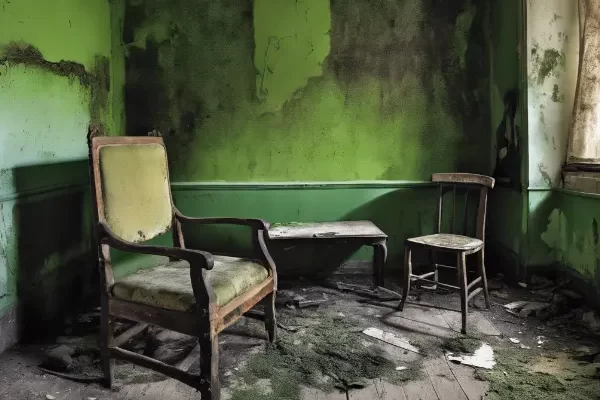The occurrence of mold in indoor areas is a frequent happening, and it prompts significant inquiries about the safety and risks to health. Mold, which is a type of fungus, can flourish on different surfaces, particularly in moist and humid environments.
Staying in a room with mold is not inherently dangerous, but extended exposure can lead to health issues, particularly for individuals who have allergies, asthma, or weakened immune systems.
Health Risks Associated with Mold Exposure
- Allergic Reactions: Individuals with a sensitivity to mold spores might encounter allergic responses such as sneezing, a dripping nose, irritated eyes, and a skin condition known as dermatitis.
- Asthma Attacks: People with asthma may experience asthma attacks more often and with greater intensity if they are exposed to mold.
- Respiratory Problems: If people are constantly exposed to mold for a long time, they may develop respiratory problems like a persistent cough and difficulty breathing.
- Immune System Impact: People with compromised immune systems may have a higher vulnerability to fungal infections caused by exposure to mold.
Safety Precautions When In a Room with Mold
It is important to adopt some safety precautions if one finds themselves in a room with mold:
- Ventilation: To decrease the concentration of mold spores in the air, you can enhance the circulation of air by either opening windows or utilizing exhaust fans.
- Protective Gear: To reduce the risk of breathing in or directly touching mold, it is advisable to wear masks and gloves whenever you are in close proximity to it.
- Limit Exposure: To avoid spreading mold spores, minimize the time spent in rooms with visible mold and avoid disturbing areas where mold is present.
- Seek Professional Removal: If mold is widespread or if there are concerns about toxic black mold (Stachybotrys chartarum), it is crucial to consult with professionals who specialize in mold remediation.
Long-Term Solutions
- Identify and Repair Sources of Moisture: Fix leaks, insulate pipes, and use dehumidifiers to control humidity levels.
- Regular Cleaning: Keep surfaces clean and dry to prevent mold growth.
- Professional Inspections: Periodic assessments by experts can help identify potential mold problems early on.
Conclusion
Although a short and limited exposure to mold in a room may not be a major threat to the overall population’s health, it is advisable to exercise caution and take steps to eradicate the mold and address the root causes. Individuals with health worries or significant mold problems are advised to seek professional help in order to restore indoor air quality and reduce health hazards.

